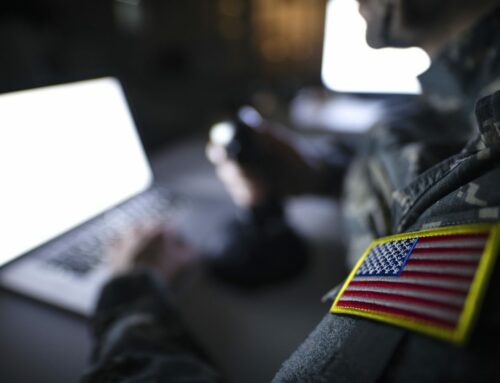Russell Smith and Peter Adam
The hactivities of enemy tyrants and malicious freelancers are providing huge opportunities to federal IT contractors. But they must be ready to step up.

Kim Jong Un – North Korea’s nuke-wielding Supreme Leader directs a Pyongyang-based cyber force known as Bureau 121.
Cyber Billions
The need for cyber-related and threat analytic services has been exploding, and this will continue. In 2004, the global cyber security market was $3.5 Billion; but this year it’s expected to reach 30 times that, a hefty $120B.
Over the next five years, cyber security spending is expected to top $200B/yr., according to the most recent Cybersecurity Ventures’ Market Report. The Federal portion of that cyber spending has been pegged at $44B, for FY 2018.
http://cybersecurityventures.com/cybersecurity-market-report/.
The Usual Suspects

Master of the 5th Column’s 4th Estate — Julian Assange, a hacker himself, created the Wikileaks portal, which has publicized embarrassing e-mails and confidential documents damaging to America’s security.
Companies providing cyber security-related services include well known, high-profile behemoths such as IBM, PWC, Booz Allen, Northrup Grumman, Lockheed Martin, IBM, Cisco, BAE, Deloitte, AT&T, etc. And there are plenty of newer, smaller entrants into the cyber struggle.
For example, Cambridge, MA-based Sqrrl, which specializes in “Threat hunting” — a proactive approach to finding and blowing away the threats that may already be squirreled away in various networks, according the company’s co-founder, Ely Kahn.
Formidable Cyber Challenges

Xi Jinping –President of the PRC reportedly commands a Cyber espionage group called Iron Tiger.
The companies offering cyber services, both large and small, will have to tackle two main obstacles to serving the market: (1) Insufficient manpower and (2) fragmentation of USG efforts to secure vulnerable entities such as IT and communications systems.
Finding the Talent
According to Govini, “Human capital will continue to be the largest dilemma for the Federal government’s Cybersecurity efforts for the foreseeable future.”

Vladimir Putin – – Did his cyber hacking prowess allow Russia to determine the outcome of the US presidential election?
Contractors are now forced to mint their own. This typically involves finding IT personnel who are motivated but not too high on the billable. A training plan identifies the delta. You use use boot camps, online, colleges, OJT … and OT. Results may start to come a few thousand dollars and months later.
A Technology Overview – from 50,000 Feet

Hacking for Dollars – Ali Khamenei, Iran’s Supreme Leader has purportedly green lighted cyberattacks on American banks.
The cyber struggle going forward offers contractors huge opportunities in the Federal space. To take full advantage of them, they should be aware of the following:
• Integration Enhancement — Cyber Systems Integrators will be required to integrate mission knowledge within the complex DoD systems, . . . and provide state-of-the-art and advanced commercial technologies, — as well as identify new emerging capabilities.
• DHS Beef Up — The Department of Homeland Security (DHS) has been tasked by the Trump Administration with beefing up the Federal Government’s cyber security capability; particularly its Continuous Diagnostics and Mitigation (CDM) program.
• DISA Consolidation — The Defense Information Security Agency (DISA) will continue consolidating its structure through a Joint Information Exchange (JIE) framework. Only 9 of the 25 the Joint Regional Security Stacks (JRSS) facilities are now fully operational.
• Shared Services /AI/Machine Learning –Solution scalability and scalable cutting-edge artificial intelligence (AI) and machine learning capabilities will be musts —- as the Pentagon proceeds with Third Offset [see Wikipedia] implementation – e.g., to give the US a quantum leap of visibility into the worldwide battle space, coordination of forces, and control of an array of autonomous weapons.
• Real-Time Responsiveness – Cyber threat Analytics will have to incorporate real time and predictive capabilities e.g., to help this US detect hostile / threats automatically and far quicker than ever before.
From FY11 – FY16, the majority of contracts in Cyber Defense and Threat Analytics were awarded through contract vehicles, leaving the other 42 percent of awards to stand-alone contracts. This 58 percent of contract vehicle awards adds up to $26.6 billion. In total, contracts were dispersed among roughly 7,600 companies.
The Cyber work discussed here gives the contractors an opportunity to help defend their country from insidious threats while racing into the frontiers of technology.

Just for the Thrill of It? — Anonymous, a loosely associated international network of hacktivists, has claimed responsibility for hacking the IT systems of various companies including PayPal, and the Church of Scientology.






Leave A Comment